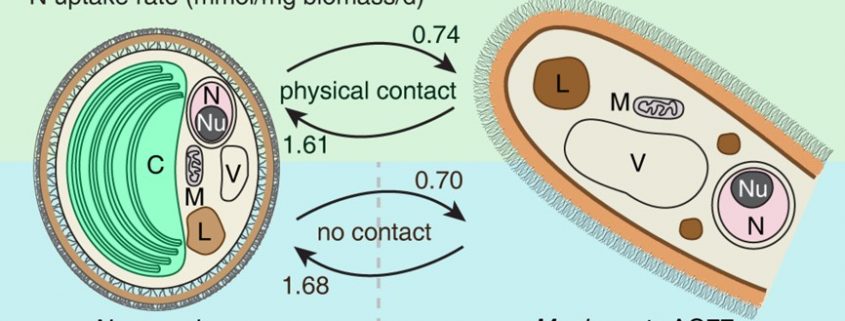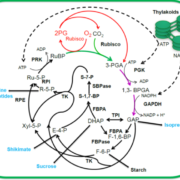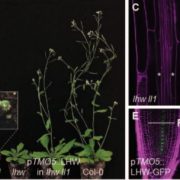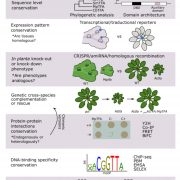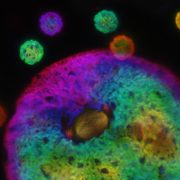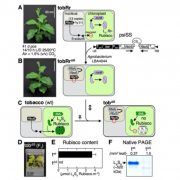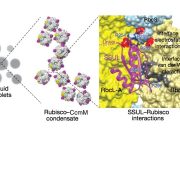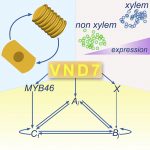Algal-fungal symbiosis may account for the origin of basal land plant species (eLIFE)
Light serves as the source of energy as well as an information signal for photosynthetic plants. During evolution, plants have acquired the ability to monitor environmental light radiation and adjust their developmental patterns to optimally utilize light energy for photosynthesis. However how the early-diverging terrestrial plants acquired the ability of photosynthesis when they left sea and colonized the land remains mysterious. Recently Du et al. found that the fungus Mortierella elongate physically interacts with the marine alga Nannochloropsis oceanica, thus formed a stable mutualism upon an exchanges of nutrients between two species. This symbiosis relationship even resulted in the incorporation of intact algal cells within fungal hyphae, which leads to the formation of photosynthetic mycelium. In other fungal/algal mutualisms such as lichen, the algal cells remain external to the fungal cells. Thus, this discovery not only boosts the study of biotechnologically important species for biofuel production, but also provides some clues about the process of endosymbiosis. (Summary by Nanxun Qin) eLIFE 10.7554/eLife.47815.001


